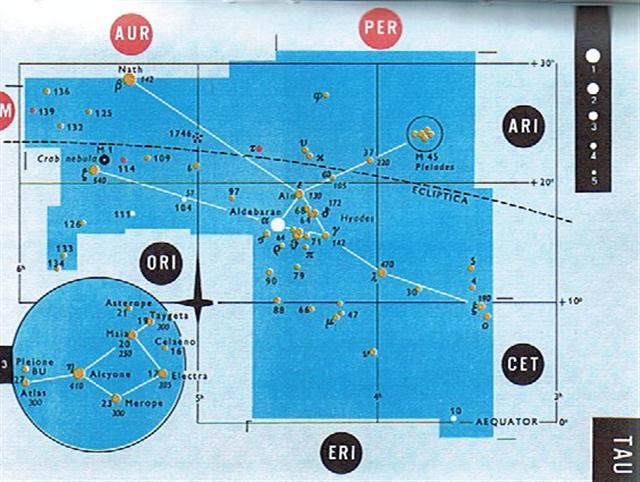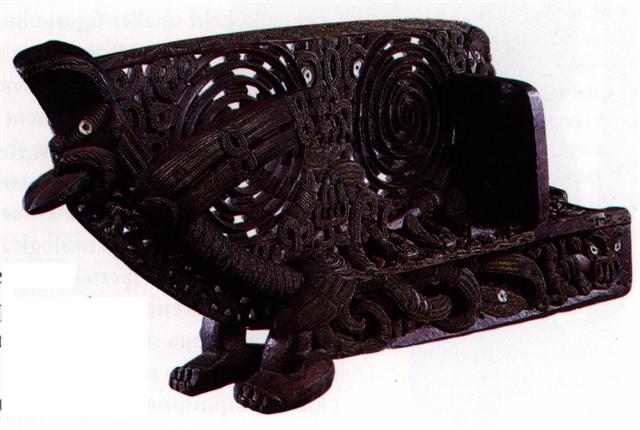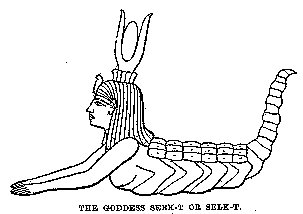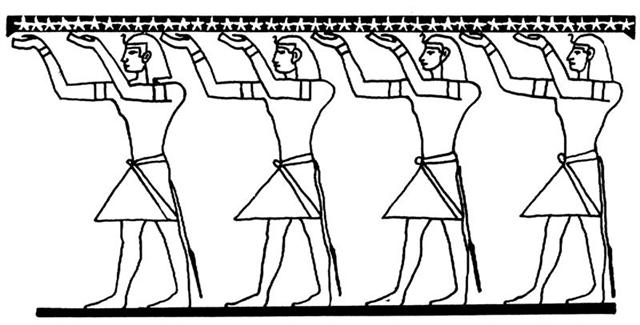217. Yesterday morning the clouds were once again absent from the sky and I could therefore not avoid noticing that in a few days time there would be a Full Moon. And like in the similar earlier event (October 29) a bright star which could not be anything else than Venus was close by to the right, i.e. having risen earlier. I counted to a distance of approximately 10 times the diameter of the Moon, which should correspond to a postion of around 5 right ascension days earlier than that for the glorious Moon. ... For each perceived Full Moon diameter I can the next time think about how one of them should correspond to ca 360 / 694 = 0.52° ... And - as if by chance - the current date according to my calendar hanging on the kitchen wall was November 25, the day when according to my assumed era for rongorongo the Sun should be close to the right ascension line connected with Antares. From October 29 (302) to November 25 (329) there were 27 days. Thrice nine hallowed days: ... As has already been mentioned, the Delphians worshipped Dionysus once a year as the new-born child, Liknites, 'the Child in the Harvest Basket', which was a shovel-shaped basket of rush and osier used as a harvest basket, a cradle, a manger, and a winnowing-fan for tossing the grain up into the air against the wind, to separate it from the chaff. The worship of the Divine Child was established in Minoan Crete, its most famous early home in Europe. In 1903, on the site of the temple of Dictaean Zeues - the Zeus who was yearly born in Rhea's cave at Dicte near Cnossos, where Pythagoras spent 'thrice nine hallowed days' of his initiation - was found a Greek hymn which seems to preserve the original Minoan formula in which the gypsum-powdered, sword-dancing Curetes, or tutors, saluted the Child at his birthday feast. In it he is hailed as 'the Cronian one' who comes yearly to Dicte mounted on a sow and escorted by a spirit-throng, and begged for peace and plenty as a reward for their joyful leaps ...
.jpg)
In time-space Antares and Aldebaran were a pair, not possible to think of in singular.
Yet, in the Venus pentagram for AD 1905 the date April 27 (107) should be located at Hyadum I (80 + *63 = 143) instead of at Aldebaran:
We can count *249 (Antares) - *69 (Aldebaran) = *180 right ascension nights. And then *69 (Aldebaran) - *63 (Hyadum I, γ Tauri → Al Dabarān) = *6 → *183 - *180 + *3.
... Väinämöinen set about building a boat, but when it came to the prow and the stern, he found he needed three words in hi rune that he did not know, however he sought for them. In vain he looked on the heads of the swallows, on the necks of the swans, on the backs of the geese, under the tongues of the reindeer. He found a number of words, but not those he needed. Then he thought of seeking them in the realm of Death, Tuonela, but in vain. He escaped back to the world of the living only thanks to his potent magic. He was still missing his three runes. He was then told by a shepherd to search in the mouth of Antero Vipunen, the giant ogre. The road, he was told, went over swords and sharpened axes. Ilmarinen made shoes, shirt and gloves of iron for him, but warned him that he would find the great Vipunen dead. Nevertheless, the hero went. The giant lay underground, and trees grew over his head. Väinämöinen found his way to the giant's mouth, and planted his iron staff in it. The giant awoke and suddenly opened his huge mouth ... I think Väinömöinen planted his staff in the mouth of the giant Vipunen in order to be able to search for origo in his mouth, viz. Hyadum I. The straight line between Ain and Aldebaran would then correspond to his iron staff (alluding to the planet Mars).
... In China, every year about the beginning of April, certain officials called Sz'hüen used of old to go about the country armed with wooden clappers. Their business was to summon the people and command them to put out every fire. This was the beginning of the season called Han-shih-tsieh, or 'eating of cold food'. For three days all household fires remained extinct as a preparation for the solemn renewal of the fire, which took place on the fifth or sixth day after the winter solstice ...
... phi is the 21st letter of the Greek alphabet ... Its origin is uncertain but it may be that phi originated as the letter qoppa ... In traditional Greek numerals, phi has a value of 500 or 500000 ... Isaac Taylor, History of the Alphabet: Semitic Alphabets, Part 1, 2003: 'The old explanation, which has again been revived by Halévy, is that it denotes an 'ape,' the character Q being taken to represent an ape with its tail hanging down. It may also be referred to a Talmudic root which would signify an 'aperture' of some kind, as the 'eye of a needle,' ... Lenormant adopts the more usual explanation that the word means a 'knot' ... If Mars was connected with the constellation of Taurus, then the complementary side should be with Venus and the Scorpion.
... Alpha's splendor naturally made it an object of worship on the Nile, and its first visible emergence from the sun's rays, in the morning at the autumnal equinox, has been connected by Lockyer with the orientation of at least nine temples in northern Egypt from 3700 B.C. onward. As such [an] object of worship it seems to have been known as Serk-t ... ... Freeman describres the dualistic cosmology of the Pythagorean school (-5th century), embodied in a table of ten pairs of opposites. On one side there was the limited, the odd, the one, the right, the male, the good, motion, light, square and straight. On the other side there was the unlimited, the even, the many, the left, the female, the bad, rest, darkness, oblong and curved ... And it would be in good sense to connect September 17 (260) with April 17 (107). 260 + 107 - 3 = 364. Our journey becomes gradually more problematic. But 580 = 584 - 4 can be attributed to Bacabob:
... Among the multitude of gods worshipped by these people [the Maya] were four whom they called by the name Bacab. These were, they say, four brothers placed by God when he created the world at its four corners to sustain the heavens lest they fall . . In the ms. Ritual of the Bacabs, the cantul kuob [the suffix '-ob' indicates plural], cantul bacabob, the four gods, the four bacabs, occur constantly in the incantations, with the four colors, four directions, and their various names and offices ...
For 4 was the difference between 364 and 360. ... The author of the Book of Enoch in his treatise on astronomy and the calendar also reckoned a year to be 364 days, though he pronounced a curse on all who did not reckon a month to be 30 days long ... Moving from September 17 (260) AD 1903 to the next point at April 27 (107) AD 1905 suggests a shift from defining time from the Full Moon at the Scorpion (and Venus) to defining time from the place of the Sun at Taurus (and Mars), i.e. from night to daytime. ... In the Mayan list of 13 day signs Night (Akbal) comes after Light (Ik) ...
|
||||||||||||||||||||||||||||||||||||||||||||||||||||||||||||||||||||||||||||||||||||||||||||||||||||||||||||||||||||||||||||||||||||||||||||||||||||||||||||||||||||||||||||||||||||












